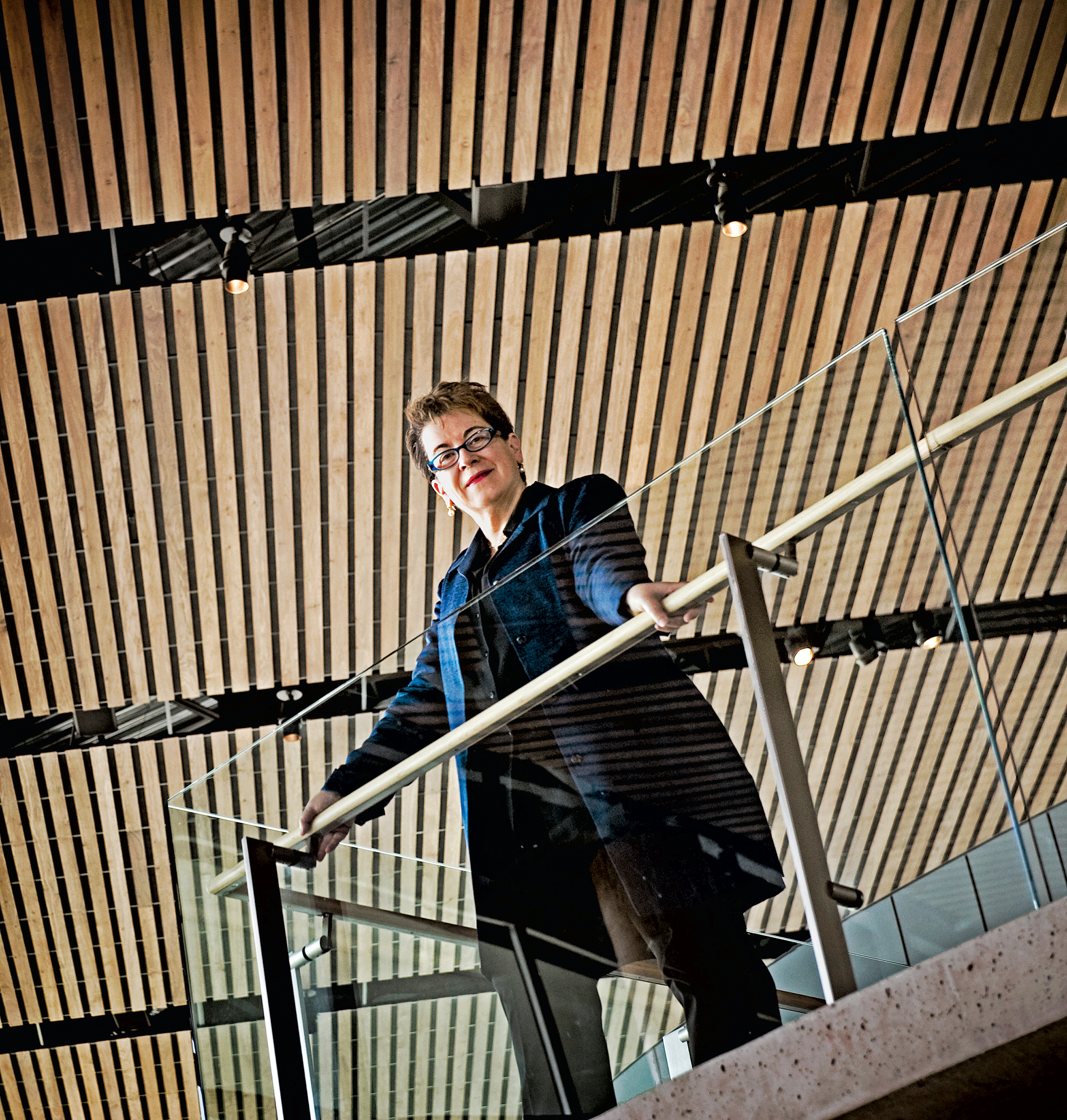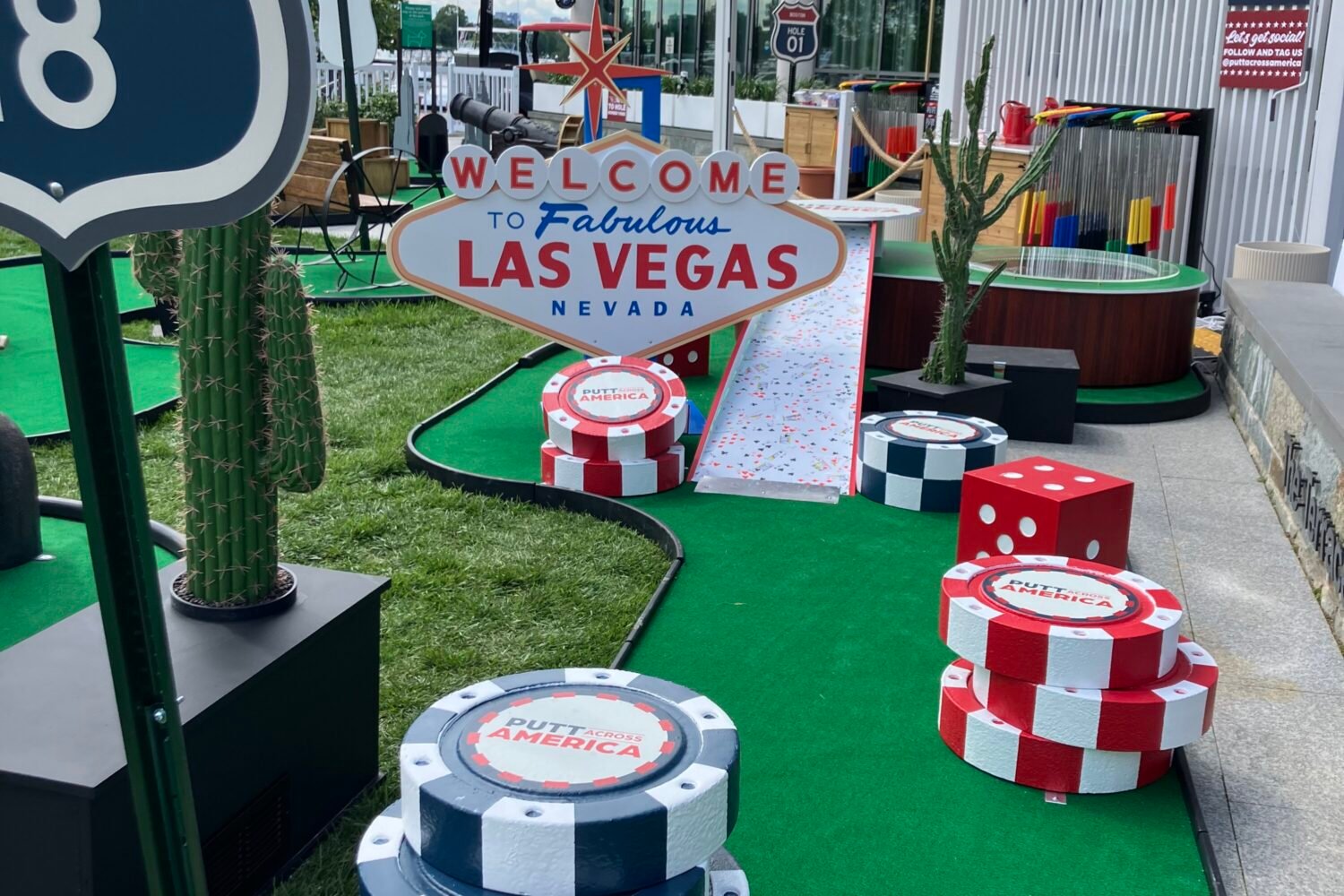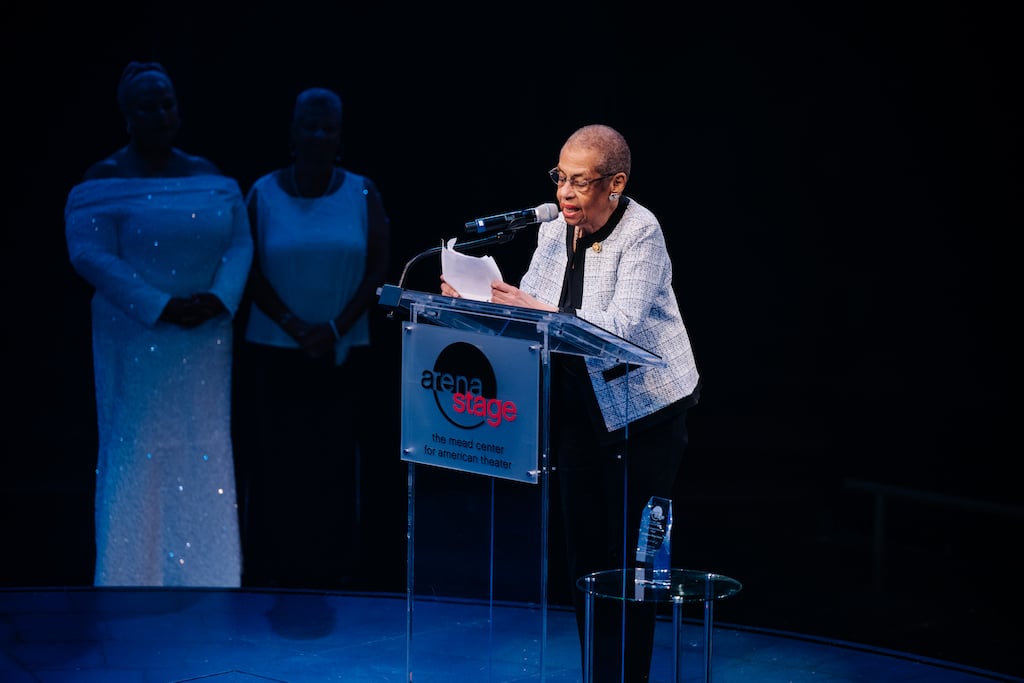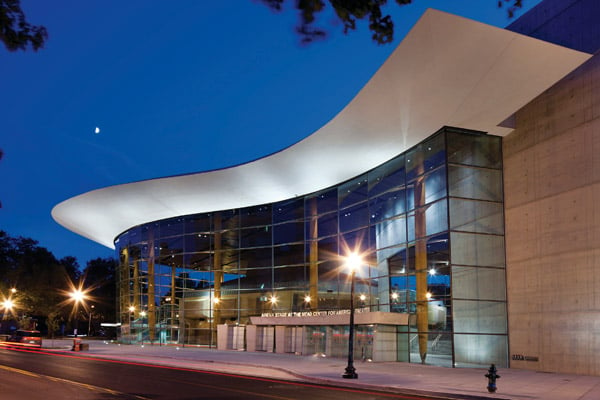Molly Smith became artistic director of Arena Stage 21 years ago, in what was then nicknamed the Forgotten Quadrant. Now, with the Southwest DC institution approaching its 70th anniversary, she looks out her office window, just across Maine Avenue from the Wharf, onto one of the fastest-growing areas of the District. On a summer afternoon, while she reclined barefoot on a green floral daybed, Smith reflected on Arena’s role in the neighborhood’s evolution and explained why she has never experienced a more exciting time to make art.
You returned to Washington in 1998. What were your first impressions coming back?
I was a student here in the ’70s, and Washington was a sleepy Southern town. There were five to ten theaters, and all the restaurants were steak restaurants or French. When I came back, there were 70 or 80 theaters. The difference in the theatrical landscape was incredible, and the difference in what was happening in the city was dramatic.
When you arrived, Arena was considering moving to Seventh Street, Northwest. Were you part of the decision to stay in Southwest?
The building was neglected and decaying. I thought, “This is one of the great theaters, and it doesn’t look like it.” Nobody came [to this neighborhood]. It was considered the worst case of “urban renewal” in the country. The rehearsal space was across the street in the lower level of a parking garage, so we’d suck gas on our way in. If we stayed, we knew we’d build something bold and strong. The city wanted a signature building in Southwest DC, and that’s how they supported us. Zelda Fichandler [one of Arena’s founders, who moved the theater to Southwest in 1960] always thought it would become one of the most important areas of the city.
What foresight!
She didn’t know it would take 60 years. But you know, dreams sometimes take a long time.
How has Arena Stage shaped the neighborhood?
Theaters always develop neighborhoods. If you look at 14th Street, it was first because of Joy Zinoman’s Studio Theatre—it wasn’t because of Whole Foods. Before Shakespeare Theatre, Seventh Street was a pretty depressed area. Here in Southwest, I think it was a combination of this magical theater space and the baseball stadium. Now, would the Wharf have happened without our building? Yes, but ten years later.
Okay, thoughts on the Wharf?
What’s exciting to me about the Wharf is that it’s drawing so many people to Southwest DC. I love all the young people who’ve moved in, all the energy of people coming out for concerts. It has made parking and traffic more difficult. More theatergoers are taking Uber, Lyft, and Metro. Now there’s a water taxi that goes from Old Town Alexandria to the Wharf. I don’t know how many audience members are using that, but I’d like to do it at some point.
Are you ever nostalgic for pre-Wharf Southwest?
I’m all about the future. I’m certainly not nostalgic for sucking gas on the way into the rehearsal hall, because we now have beautiful light-filled rehearsal spaces.
You’ve said that every city has its own language, and DC’s is politics. Has Washingtonians’ hunger for political stories surprised you?
I’ve been thrilled because when I came, I was looking for DC’s theater voice. I said, “Maybe it’s a political voice.” And people said, “Oh, no no no. Nobody wants to hear political plays.” We started producing plays that were political in nature pretty early in my time and have focused on them more and more.
How would you describe the city’s theater scene today?
This is a great theater city because we have large theaters like Arena and Shakespeare; midsize like Woolly, Studio, and Signature; and small like Rorschach. All of these learn from each other and steal from each other. Washington is becoming a city where people want to do theater because they can actually work. In New York, actors have great résumés, but they haven’t worked in two years. Here, if you’re a strong actor, you’re working all the time.
How has the current administration affected the shows you’re doing?
This is the most exciting time in my life to be making theater. It’s because audiences are hungry to be in community with each other and everything has meaning to people. I think our audiences are the smartest in the country and are interested in meaty plays. Theater doesn’t thrive when the world is easy—it really thrives when there’s chaos. As artists, part of our job is to make sense of the world.
Not that different from a journalist.
Exactly. And that’s what I would have been if I weren’t an artist. I think there are similar questions that you ask—who, what, why, where, how. Digging into the story, digging into the characters of the story.
You’ve said that Arena’s 2019–20 season—which is its 70th anniversary—is one of revolution and uprisings. How so?
If you look at something like Newsies [opening November 1], you can look at it as entertainment or as a children’s crusade. What we’re seeing with the young people around gun control or climate change is powerful. Newsies is about young newsboys and girls rising up against the [labor practices of] newspapers, so it’s the beginning of unionizing for these kids. We’re looking at issues that are really important to kids. They’re important to adults, too, but it’s the children who are showing us the way.
This article appears in the September 2019 issue of Washingtonian.



















